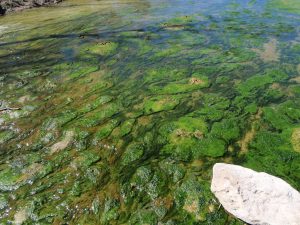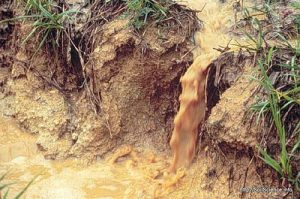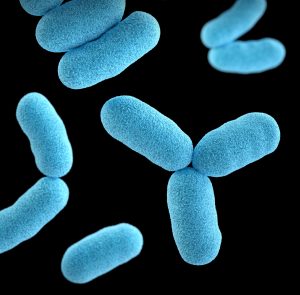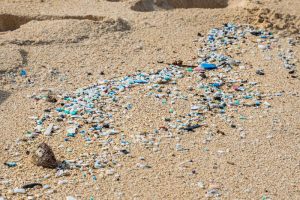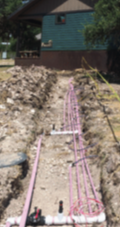Water Quality and its Threats
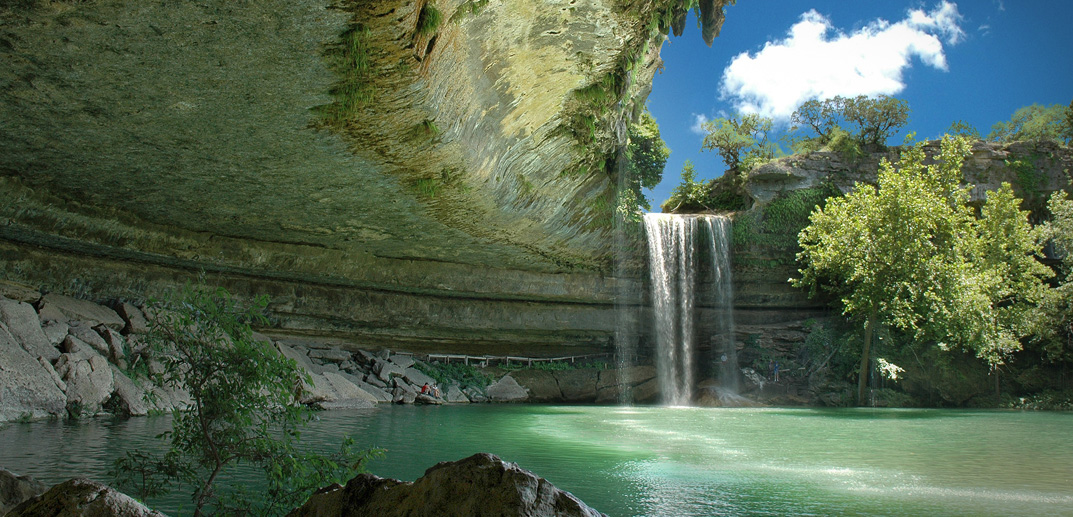
Water Quality and its Threats
We are fortunate to enjoy drinking water from our rivers and aquifers that is largely high quality – clear, clean and safe for swimming and fishing. However, as development continues to put pressure on the land, we must ensure that the water quality standards that are in place are enforced and that new development does not jeopardize the clean, clear water that helps make the Hill Country our home.
Land use changes related to development can drastically affect existing natural solutions while also increasing pollutant loading across the region. In some areas, riparian lands — the banks of rivers and streams — are protected by regulations that require vegetative buffers and silt control structures where riparian land is disturbed. This helps prevent erosion and can reduce runoff when heavy rains hit. Enforcement of these regulations, however, is often difficult. Recognizing that undeveloped land is a major component in cleaning dirty water and keeping existing water clean, many cities have instituted programs that purchase development rights in their water supply basins to guarantee cleaner drinking water.
In the long run, it is far cheaper to protect your water source from contamination rather than to clean contaminated water. Proactive water quality protection saves everyone money and energy in the long run!
Causes of Water Quality Decline: Point and Nonpoint Source Pollution
In general, water quality is degraded by pollution from two main sources: point sources and nonpoint sources.
Point Source Pollution
As its name suggests, point source pollution is any pollution that comes from a particular site or a single, identifiable source. Point source pollutants are often easier to identify and “point” out the exact cause of pollution. The most common source of point source pollution in the Hill Country is the discharge of wastewater into rivers and streams.
Nonpoint Source Pollution
Most nonpoint source pollution problems are related to pollutants coming from numerous sources, spread across a landscape and carried into surface and groundwater by runoff from rain. Some nonpoint source pollutant problems can also be attributed to leaks and spills from septic tanks or other wastewater management systems, natural processes and cycles, and other issues that can be hard to trace back to a single source. Since there is not one single source to “point” out, nonpoint source pollutants can be harder to identify and address – as a result, nonpoint source pollution is a collective problem and ultimately more subtle form of pollution.
Common Pollutants
Nutrients
Most of our smaller, crystal-clear Hill Country streams are highly oxygenated and have extremely low organic nutrient loads. The majority of our native plants and animals thrive in these creeks due to millions of years of evolutionary adaptation. Adding nutrients – such as nitrogen and phosphorous – to Hill Country landscapes and waterways can pollute water and create an environment ripe for damaging algae blooms that degrade water quality and limit access to streams for both humans and wildlife. Uncontrolled algae growth can create toxic algal blooms, which suck up all of the available oxygen, killing fish and other wildlife and throwing natural biological systems out of order.
In addition to affecting creeks, added nutrients can impact rocky, standing bodies of water – like Lake Travis in Austin. In addition to runoff from fertilizers (which contain large quantities of phosphorus and nitrogen), increased wastewater discharge can be a significant source of nutrient pollution, since most wastewater still contains phosphorous and nitrogen even after treatment.
Since the 1980s, a rule from the Texas Commission on Environmental Quality (TCEQ) has limited the amount of direct discharge within a 10-mile area of the Highland Lakes Watershed. This wastewater discharge ban is unique – it is the first and only ban of its sort on wastewater discharge near a lake in Texas – even though discharge outside this area and into other Hill Country water sources can still have negative effects on water quality. Since wastewater discharge increases with population growth, finding efficient ways to reuse discharge will be a key part of protecting the quality of our water supply.
Did you know that wastewater treated to drinking water standards STILL has more nutrients – like phosphorus and nitrogen – than what many of our clear, Hill Country streams can handle?
Sediment
While sediment such as sand, soil, or decomposing plants is common and occurs naturally in lakes, rivers, and streams, development can often increase sedimentation. When natural landscapes are modified or developed, the land often erodes and an increased amount of sediment can get washed into our surface water, causing clear waters to turn murky. When sediment is trapped, floating in our surface water, it can clog our waterways and interfere with the life cycles of plants and animals living there.
In the Hill Country, construction runoff is a significant threat to our water quality, and residents can help by monitoring construction activities and observing any waterway banks for signs of pollution.
Bacteria
The main sources of bacterial pollution are agricultural operations (especially ones with large populations of livestock) and untreated discharge (like leaky septic tanks). The TCEQ is responsible for regularly updating the state’s Water Quality Standards, which set limits on bacteria in the state’s surface water. During the last revision, in March 2010, the commissioners retained the existing level of protection for main reservoirs and other highly trafficked recreational sources. However, the commissioners also created new categories that will allow some streams used for recreation to contain more bacteria.
Chemicals
Toxic chemicals, oil and other particles deposited through rain and runoff are also increasingly common as land is developed and paved over. Pollutants build up on impervious cover like buildings, streets and parking lots, and drain into creeks, streams and aquifers when it rains. Maintaining adequate open spaces and protecting fragile karst formations that are key locations for groundwater recharge can help minimize the effects of pollution from toxic runoff. Also see HCA’s Sustainable Development page here, which includes information on Low Impact Development, a stormwater management technique that reduces contaminated runoff.
Emerging Contaminants
Pharmaceuticals, Teflon and micro-plastics. Scientists are seeing a nationwide trend in the increase of Contaminants of Emerging Concern (CECs). This term has been used loosely since the mid-1990s by EPA and others to identify chemicals and other substances that have no regulatory standard, have been recently “discovered” in natural streams (often because of improved analytical chemistry detection levels), and potentially cause deleterious effects in aquatic life at environmentally relevant concentrations.
Along with pharmaceuticals (stimulants, birth-control, anti-depressants, etc), Teflon, and micro-plastics, CECs describe any contaminant that is not currently included in routine monitoring programs and may be candidates for future regulation depending on their (eco)toxicity, potential health effects, public perception, and frequency of occurrence in environmental media. CECs are not necessarily new chemicals. They include pollutants that have often been present in the environment, but whose presence and significance are only now being evaluated. More information here.
Wastewater Effluent: The Biggest Threat to Hill Country Water Quality
As the population of the Hill Country grows, so does the amount of wastewater produced. More wastewater becomes more difficult to ‘get rid of,’ however, many of our communities who see the value in keeping effluent out of our beautiful streams and rivers have begun to struggle with the realities of the high cost of disposal. Some would prefer to abandon the land application of treated sewerage to the more affordable and easy to permit direct discharge method. The direct discharge of treated effluent into our streams and rivers is a sure recipe for algae blooms, contamination, and will harm the health of our waterways. In some instances, those waterways directly recharge our drinking water aquifers.
There are alternatives to direct discharge and as more Hill Country Communities embrace these novel solutions, we have found that these solutions yield better in both the short and long-term. Often, we can save money, improve water quality, and protect the health of our communities and environment.
Myths and Truths Surrounding Wastewater Discharge
 While water resources are among the Hill Country’s most beloved assets, they are also among the most fragile and at-risk. Thousands of free-flowing springs feed our creeks and rivers with clean, cool water — contributing to the long-term health, quality of life, and economic vitality of this region. As more people move to the Texas Hill Country, it is important to dispel common and long-held misperceptions relating to Central Texas’ water resources and to keep our attention on the importance of clean, flowing water. Click the image to explore our issue paper on the myths and truths surrounding wastewater discharge in Hill Country streams and creeks.
While water resources are among the Hill Country’s most beloved assets, they are also among the most fragile and at-risk. Thousands of free-flowing springs feed our creeks and rivers with clean, cool water — contributing to the long-term health, quality of life, and economic vitality of this region. As more people move to the Texas Hill Country, it is important to dispel common and long-held misperceptions relating to Central Texas’ water resources and to keep our attention on the importance of clean, flowing water. Click the image to explore our issue paper on the myths and truths surrounding wastewater discharge in Hill Country streams and creeks.
Alternatives to Direct Discharge
 Land Application
Land Application
A Texas Land Application Permit (TLAP) is a better alternative to the more traditional direct discharge of wastewater into a waterbody. In a land application, treated wastewater is spread onto a dedicated field where the plants and soil act as another treatment phase for the water. Soil systems can provide superior and more cost-effective treatment for many domestic wastewater pollutants. However, land application is not ideal in all cases and if done in the wrong place can leak into aquifers.
Beneficial Reuse
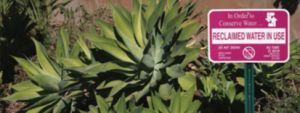 A more ideal alternative to direct discharge is beneficial reuse. This occurs when treated effluent is used to replace potable water use, such as to irrigate landscaping, medians, golf courses, and sports fields. In addition to outdoor applications, water can be reused to supplement low priority needs, such as flushing toilets. Beneficial reuse systems can easily be decentralized and scaled to cover one building or a group of buildings.
A more ideal alternative to direct discharge is beneficial reuse. This occurs when treated effluent is used to replace potable water use, such as to irrigate landscaping, medians, golf courses, and sports fields. In addition to outdoor applications, water can be reused to supplement low priority needs, such as flushing toilets. Beneficial reuse systems can easily be decentralized and scaled to cover one building or a group of buildings.
Hill Country Success Story: Save Our Sabinal and the LoneHollow Ranch
 Save Our Sabinal Logo displays a blue wave over a white and yellow backdropAfter months of opposition, including a petition garnering nearly 25,000 signatures and three county resolutions opposing the wastewater permit application, HCA is happy to share some GREAT news from the Bandera Canyonlands Alliance, LoneHollow Ranch, and The Cibolo Conservancy!
Save Our Sabinal Logo displays a blue wave over a white and yellow backdropAfter months of opposition, including a petition garnering nearly 25,000 signatures and three county resolutions opposing the wastewater permit application, HCA is happy to share some GREAT news from the Bandera Canyonlands Alliance, LoneHollow Ranch, and The Cibolo Conservancy!
Young Life’s LoneHollow Ranch has officially withdrawn their request for a TCEQ discharge permit. Instead, they will be enacting a Zero-Discharge water conservation plan, reusing effluent as irrigation on site, and pursuing a Texas Land Application Permit (TLAP). Click here to learn more from our partners at the Bandera Canyonlands Alliance.
Partners in Hill Country Water Quality Protection:
Looking to learn more or connect with an organization focused on water quality protection? Read on and click the logos below to visit some of our partner organization’s websites. If we missed a relevant group in your part of the Hill Country, or if you have suggestions on additional regional partners we should include, please contact leah@hillcountryalliance.org.
 Recently, the Greater Edwards Aquifer Alliance has taken the lead on challenging a Land Application Permit (TLAP) for a proposed subdivision development upstream of the confluence of Honey Creek and the Guadalupe River. A coalition of local groups including Bulverde Neighborhoods for Clean Water, Texas Cave Management Association and local landowners joined GEAA in contesting the permit.
Recently, the Greater Edwards Aquifer Alliance has taken the lead on challenging a Land Application Permit (TLAP) for a proposed subdivision development upstream of the confluence of Honey Creek and the Guadalupe River. A coalition of local groups including Bulverde Neighborhoods for Clean Water, Texas Cave Management Association and local landowners joined GEAA in contesting the permit. In October 2020, Save Barton Creek Association released a report including a Hill Country Sewage Scorecard, which grades all of the region’s municipal wastewater discharge facilities on how often they exceed the pollution limits in their state-issued permits. Among the reports findings is that 81% of all sewage discharge plants in the Hill Country have exceeded at least one of their pollutant limits since 2017. Click here to read the full report – “Pristine to Polluted: Sewage Problems & Solutions in the Texas Hill Country.”
In October 2020, Save Barton Creek Association released a report including a Hill Country Sewage Scorecard, which grades all of the region’s municipal wastewater discharge facilities on how often they exceed the pollution limits in their state-issued permits. Among the reports findings is that 81% of all sewage discharge plants in the Hill Country have exceeded at least one of their pollutant limits since 2017. Click here to read the full report – “Pristine to Polluted: Sewage Problems & Solutions in the Texas Hill Country.”
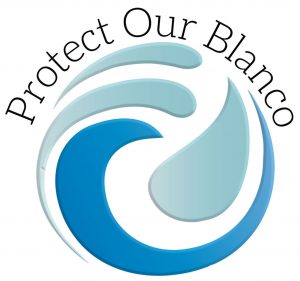 Protect Our Blanco is a citizen group which formed around the City of Blanco’s request for a permit to discharge 1.6 million gallons of treated wastewater daily into the Blanco River, which provides essential recharge water for the Edwards and Trinity Aquifers. It is estimated that more than 3 million residents in Central and South Texas rely on these two Aquifers as their primary source of drinking water.
Protect Our Blanco is a citizen group which formed around the City of Blanco’s request for a permit to discharge 1.6 million gallons of treated wastewater daily into the Blanco River, which provides essential recharge water for the Edwards and Trinity Aquifers. It is estimated that more than 3 million residents in Central and South Texas rely on these two Aquifers as their primary source of drinking water.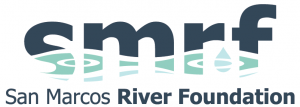 San Marcos River Foundation has and continues to do amazing work to preserve the quality of the San Marcos River basin. SMRF works to provide local teachers with grant money to start their own water quality testing programs and organizes the San Marcos River Rangers a group of volunteers trained as citizen scientists to conduct data collection along the river.
San Marcos River Foundation has and continues to do amazing work to preserve the quality of the San Marcos River basin. SMRF works to provide local teachers with grant money to start their own water quality testing programs and organizes the San Marcos River Rangers a group of volunteers trained as citizen scientists to conduct data collection along the river.SMRF has partnered with the Meadows Center for Water and the Environment to create and implement a community and federally approved Watershed Protection Plan (WPP) for the Upper San Marcos River. The WPP is exploring way to manage the impacts to surface and groundwater resources and is a voluntary, stakeholder driven product. Currently, the project is in a 3-year research and information gathering process. Learn more on the SMRF website by clicking their logo.
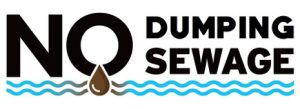 The No Dumping Sewage campaign is an effort to protect Hill Country streams and the Edwards Aquifer from wastewater pollution. Collaborators include Save Barton Creek Association, Greater Edwards Aquifer Alliance, Clean Water Action, and the Wimberley Valley Watershed Association.
The No Dumping Sewage campaign is an effort to protect Hill Country streams and the Edwards Aquifer from wastewater pollution. Collaborators include Save Barton Creek Association, Greater Edwards Aquifer Alliance, Clean Water Action, and the Wimberley Valley Watershed Association.The group advocates for environmentally friendly wastewater alternatives that provide community benefits rather than damaging our water with excess nutrients, bacteria and potential spills of raw sewage. More applications are being sought for direct discharge of wastewater that threaten our waterways and opposition is growing.
Recent Water Quality News
Protect the Pedernales: The dangers of discharge
The Pedernales River is one of Texas’s most cherished waterways, an ecological, recreational and cultural treasure that defines the Hill Country. As stewards of this vital resource, the Pedernales River Alliance (PRA) has opposed the wastewater permit application...
An EPA rule will reduce lead in drinking water—Unless this effort to block it succeeds
A landmark Environmental Protection Agency rule enacted at the end of last year sought to address the lead crisis—which threatens the health of millions of Americans—by tightening limitations on toxic lead and copper in drinking water. But that might not be the final...
Texas lawmaker files bill to reduce “forever chemicals” in sewage-based fertilizer
Johnson County’s newest state representative, Helen Kerwin, R-Cleburne, filed her first bill Friday targeting an environmental problem that has struck her county: PFAS contamination in sewage sludge-based fertilizers. Kerwin said House Bill 1674, could reduce the...
Texas regulators report more than 250 new cases of groundwater contamination
Texas agencies reported 252 new cases of groundwater contamination during 2023 in the Texas Groundwater Protection Committee annual report. The latest report compiles 2,870 open cases of groundwater contamination, some of which date back decades. Nearly every county...

